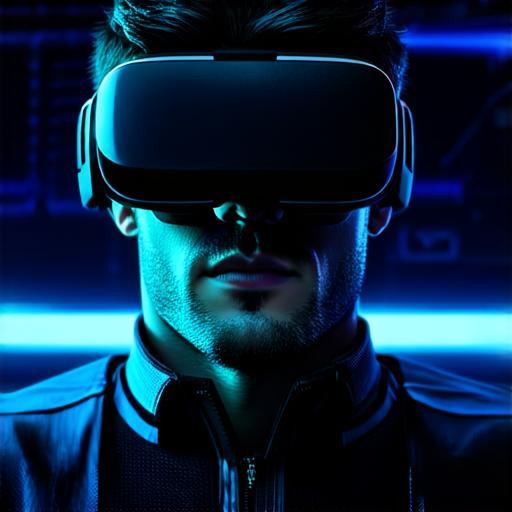The Evolution of Virtual Reality

In the early days of VR, the technology was primarily used for military training, scientific simulations, and entertainment. But as the technology improved, the applications became more diverse. Today, VR is being used in a variety of fields, including healthcare, education, and even real estate.
One of the key developments in VR technology has been the rise of wireless headsets. These devices allow users to move around more freely and interact with virtual environments without the constraints of cords. Additionally, advancements in motion tracking have made it possible for VR systems to track movements more accurately than ever before. This has led to more immersive and realistic experiences.
The Impact of Virtual Reality on Society
As VR technology continues to improve, it is likely that we will see even more widespread adoption of this technology. One area where VR is already making a significant impact is in healthcare. For example, surgeons are using VR simulations to practice complex procedures and reduce the risk of complications during actual surgeries.
Additionally, VR therapy is being used to treat conditions such as PTSD and phobias.
In education, VR is being used to create more engaging and interactive learning experiences. Students can take virtual field trips to historical sites or explore the human body in a way that would be impossible in real life. This technology has the potential to revolutionize the way we learn and make education more accessible to everyone.
Virtual reality is also changing the way we work. For example, architects are using VR to create realistic 3D models of buildings, allowing clients to experience the space before construction begins. Similarly, engineers can use VR simulations to test designs and identify potential problems before they become costly mistakes.
The Future of Virtual Reality: Predictions and Possibilities
While it is impossible to predict exactly what the future holds for VR technology, there are a few trends that we can expect to see. One of these is continued advancements in motion tracking and haptic feedback technologies. These will allow users to feel more immersed in virtual environments and make interactions with virtual objects more realistic.
Another trend we can expect to see is the integration of VR technology into everyday life. This could include everything from virtual shopping experiences to augmented reality applications that enhance our daily routines. As VR becomes more accessible and affordable, it is likely that we will see it become a part of our everyday lives.
One area where VR technology is likely to have a significant impact is in the field of transportation. For example, self-driving cars could use VR simulations to train drivers and reduce the risk of accidents. Additionally, VR could be used to create more immersive and realistic travel experiences, allowing people to explore new destinations without ever leaving their homes.
Conclusion: The Future of Virtual Reality is Bright
As virtual reality technology continues to improve, it is clear that it will have a significant impact on our lives in the years to come. Whether it’s in healthcare, education, or transportation, VR has the potential to revolutionize the way we live and work. As developers, it is up to us to continue pushing the boundaries of what is possible with this technology and to create experiences that will change people’s lives for the better.
Potential Applications of VR Technology in Healthcare
Virtual reality technology has the potential to revolutionize healthcare by creating more immersive and realistic training experiences for healthcare professionals. For example, surgeons can use VR simulations to practice complex procedures, allowing them to improve their skills and reduce the risk of complications during actual surgeries.
Virtual reality therapy is another potential application of VR technology in healthcare. By creating virtual environments that simulate real-world scenarios, individuals can confront their fears in a safe and controlled environment. For example, individuals with PTSD can use VR to revisit traumatic events and work through their emotions in a controlled setting.
Potential Applications of VR Technology in Education
Virtual reality technology has the potential to revolutionize education by creating more engaging and interactive learning experiences. For example, students can take virtual field trips to historical sites or explore the human body in a way that would be impossible in real life.
VR can be used to create simulations of real-world scenarios, allowing students to gain practical experience in a safe and controlled environment.
Potential Applications of VR Technology in Transportation
Virtual reality technology has the potential to revolutionize transportation by creating more immersive and realistic training experiences for drivers. For example, self-driving cars could use VR simulations to train drivers and reduce the risk of accidents.
VR can be used to create immersive travel experiences, allowing individuals to explore new destinations without ever leaving their homes.
